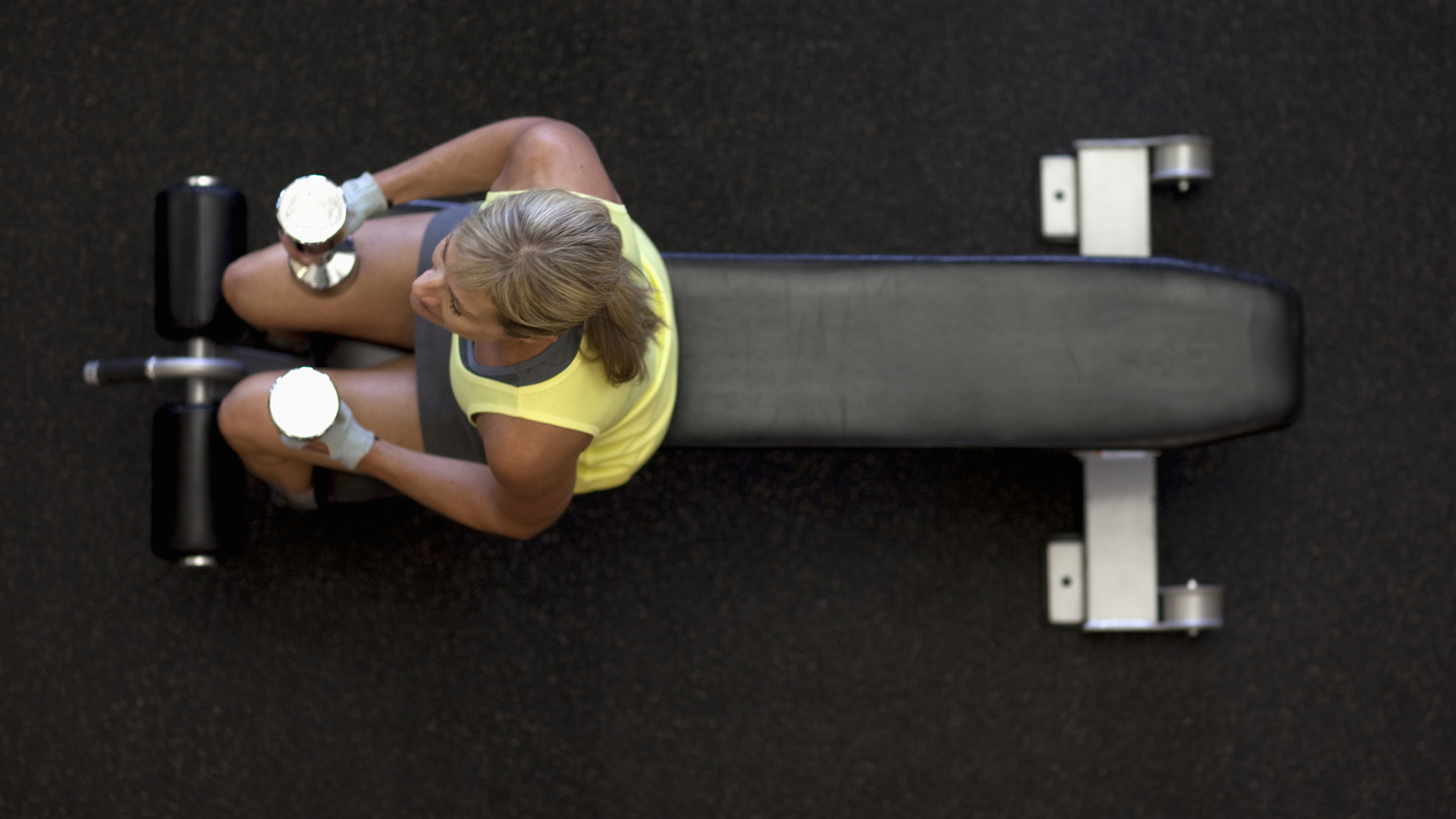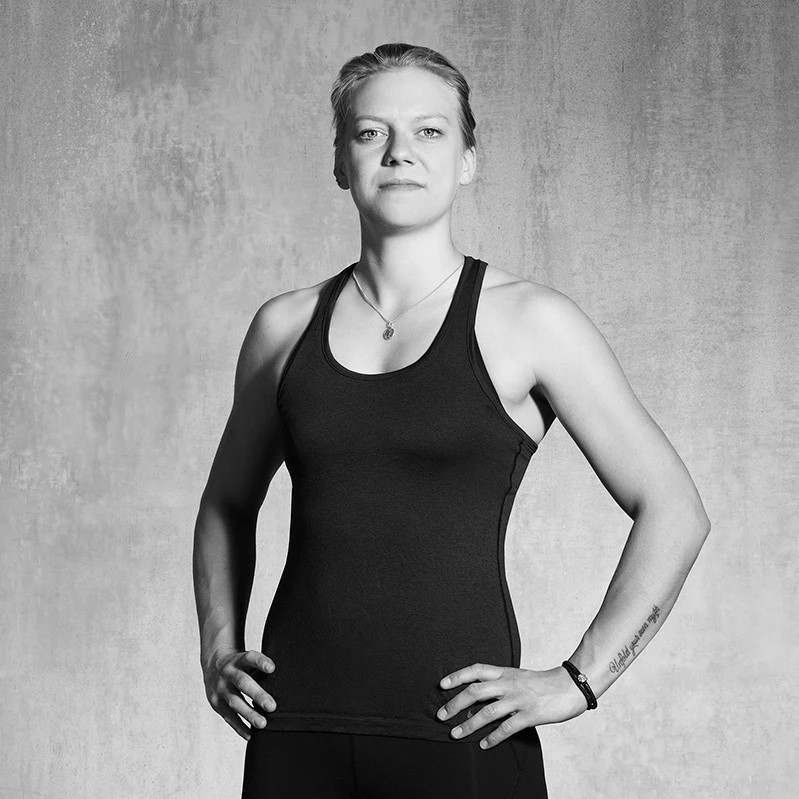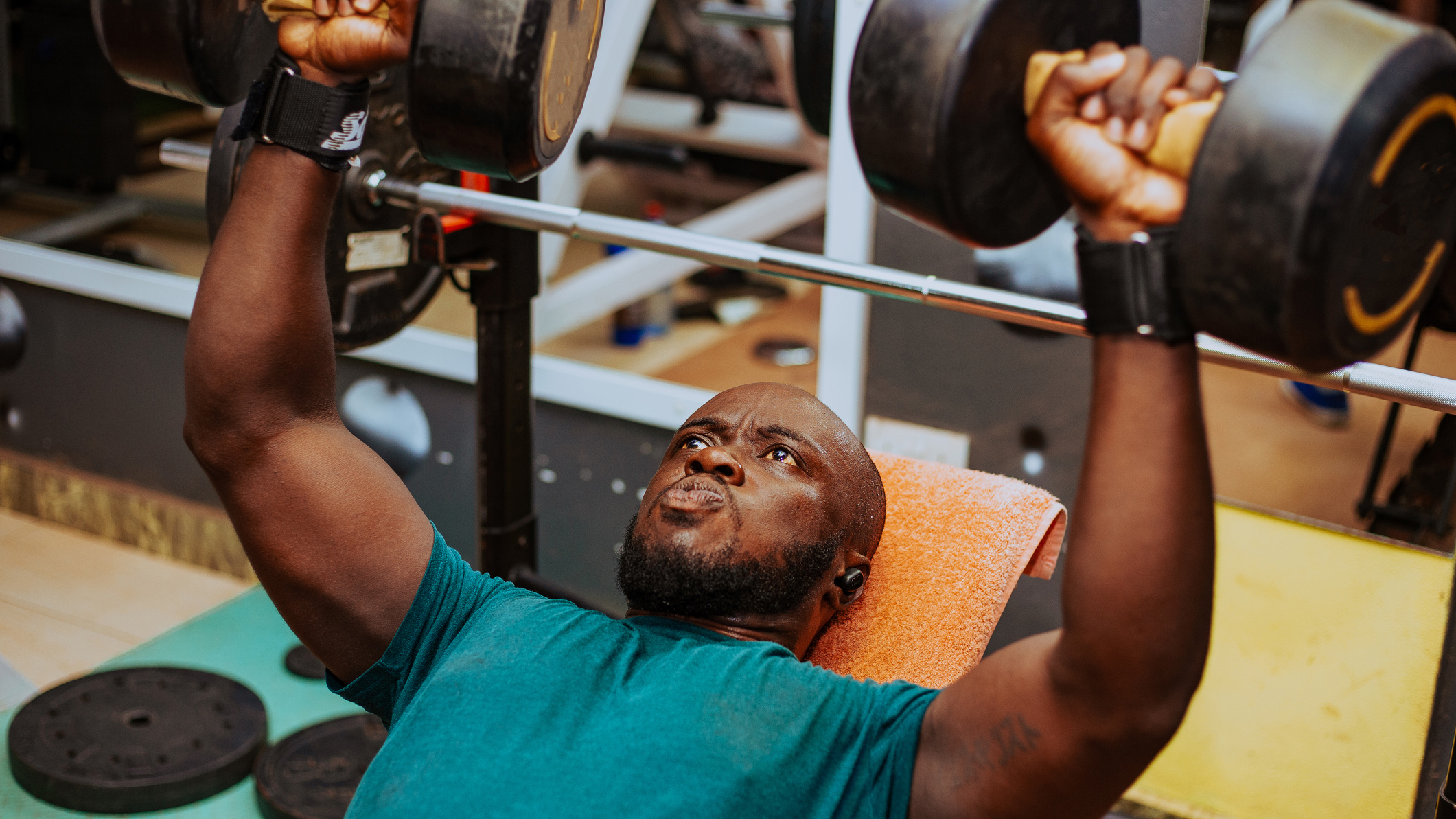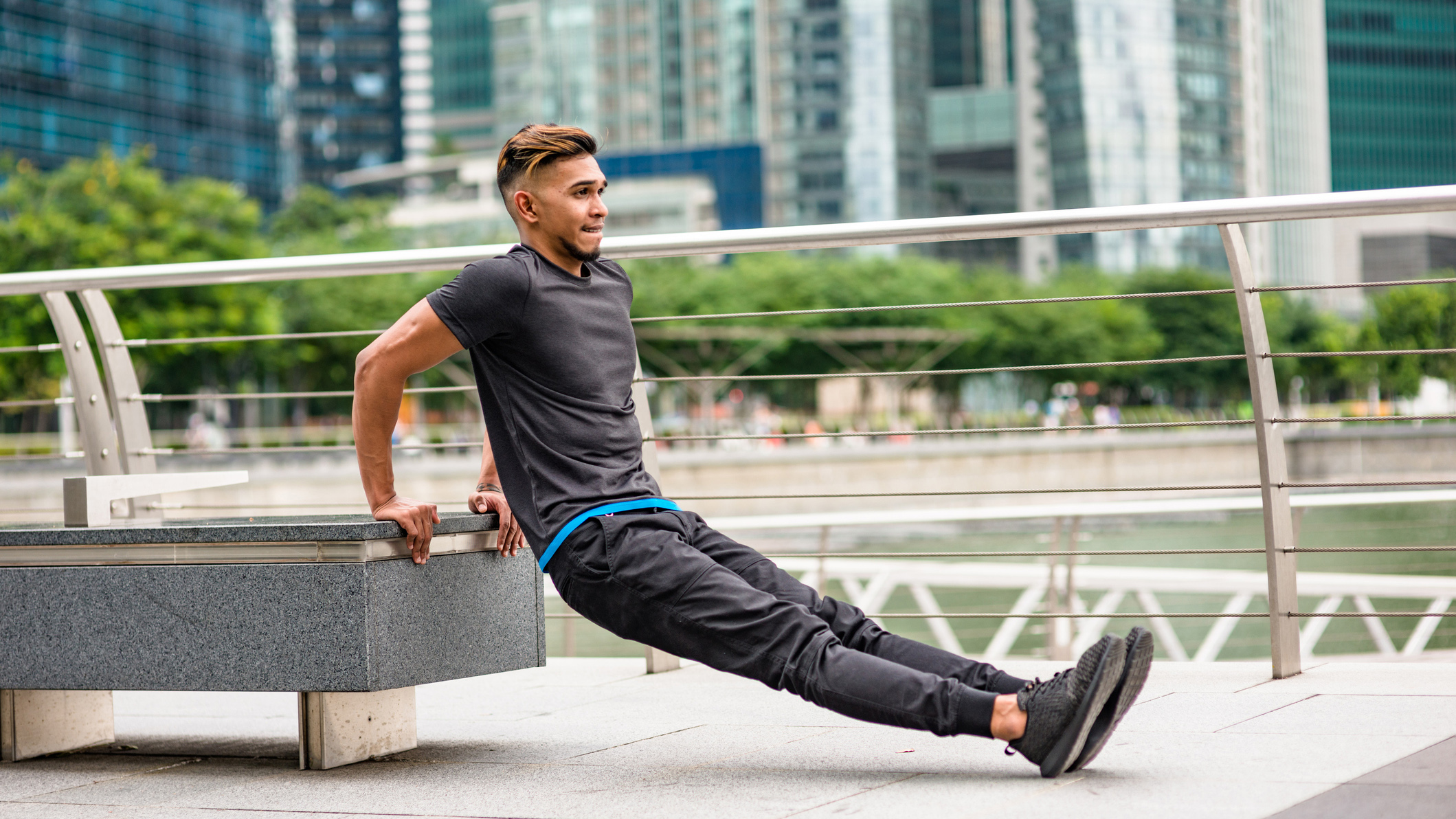
Sometimes, the old way is the best way – and that can certainly be said about the weights bench. Also known as a training bench or workout bench, the weights bench is the golden oldie of the gym space but still one of the most simple and effective pieces of equipment you’ll find there. But how should it be used, and what are the best workout bench exercises?
Nowadays, the best weight benches pack almost as much tech as some top wearables and feature high-tech material, precision-built frames and sophisticated mechanisms. It's only a matter of time until we start seeing smart weight benches, mark my words!
To give us some insight and explain how best to use a weights bench, we enlisted the help of Chloe Trigg, PT, fitness coach and Head of Strength at London boutique fitness studio BLOK. How does she get people to grow in size and strength? By incorporating the below weight bench exercises into her clients' workout routine.

Chloe is an endurance athlete with extensive experience in strength training, who ensures every session is challenging, purposeful, and rewarding. Expect a tough but endorphin-high workout with her classes at BLOK, filled with knowledge and endless encouragement.
Why should you use a weight bench?
A weights bench is much more than just something to sit or lie on. They provide a solid, slimline base for you to train from and can be adjusted to an angle that better suits your style of training or goals. “A workout bench can be useful as it adds another dimension and much more variety to your free weights workouts,” says Trigg.
“It can be utilised in strength, power, agility and speed exercises. As well as offering advanced and more advanced movements, it can also offer support where balance or the movement pattern is still being developed.”
The bench also offers support which is especially key when doing unilateral movements or trying to isolate a muscle. “A bench can also increase the range you get from your muscles and better isolate muscle groups,” adds Trigg. “For example, instead of split squats on the floor, you can raise your rear leg on the bench and do Bulgarian split squats.”
This, she says, increases the range of motion, as you are able to go lower, and demands more balance and stability as you are isolating and loading your front leg more.
Sign up to the T3 newsletter for smarter living straight to your inbox
Get all the latest news, reviews, deals and buying guides on gorgeous tech, home and active products from the T3 experts
The six best weight bench exercises
For a simple but effective full-body workout on your workout bench, Trigg suggests the following three supersets, but doing 3-4 sets of each superset, with a 45-60 second rest in between each set.
“Reduce the rest on the conditioning tri-set at the end to get the heart rate up and finish with a bit of a pump,” she recommends.
They should be completed using dumbbells of a weight that is suited to your ability. Haven't got one yet? Check out T3's best dumbbells and best adjustable dumbbells guides for inspiration.

Set A: 3-4 sets with rest periods of 45-60 seconds
A1) 8-12 Box Squat (onto bench)
This exercise strengthens your hamstrings and glutes as it forces you to better engage your posterior chain than with regular squats. Traditionally performed on a box, they can be just as effective on a weights bench and can be completed with or without weights (a barbell, ideally) depending on what your goals are.
How to do it: Grip a barbell just outside of shoulder width with your thumbs wrapped around the bar, resting it on the natural shelf created between your trapezius muscles and the top of your scapula. Squeeze your shoulder blades together, stand up and with a wide stance, step as close to the bench as possible without making contact with it.
With toes pointed straight ahead, engage your abdomen and lower while bending at the hips and knees. While maintaining a neutral spine, continue squatting until you are completely sitting on the bench. Reverse the action to get back to the original standing position and repeat.
A2) 10 (per leg) Bulgarian Split Squat
The Bulgarian split squat strengthens the muscles of the legs, including the quads, hamstrings, glutes, and calves. As a single-leg exercise, it also improves your balance and this core strength.
How to do it: Rest the top of your foot on the bench with the bench behind you. In a lunge position and torso upright, brace your core and ensure your hips are square to your body with your leading leg about half a metre in front of the bench. Next, lower until your front thigh is almost horizontal, keeping your knee in line with your foot. Drive up through your front heel back to the starting position and repeat.

Set B: 3-4 sets with rest periods of 45-60 seconds
B1) 8-12 Bench Press
The bench press is a tried and tested move that still proves popular today due to its effectiveness at growing muscle in the chest. It also targets the anterior deltoids, triceps, and lats.
How to do it: Lie on your back with the bench flat. Hold the Dumbbells out above you with your wrists straight, shoulders down and your elbows at a 45 degree angle to your body. Push up and slightly back – unlike exercises such as squats, the bar path isn't completely straight. Make sure the weights finish around your eye level. And then bring them back down towards your shoulders. Keep your back arched for full chest extension and lock your body into a secure position by grounding your feet flat on the floor either side of the bench.
B2) 10 (per arm) Supported Single Arm Row
By resting one side of your body on the bench while working the other, the single arm row helps to engage other muscles to help row the weight up. It targets the lats, rhomboids, rear deltoids and trapezius muscles.
How to do it: Stand to one side of the weight bench and rest the closest knee to the bench on the seat. Bend over and support your weight with the arm that's closest to the bench, keeping it straight. With your outside arm, bring the dumbbell up so you thumb meets your armpit then lower back down after squeezing at the top.

This guy is clearly not using a weight bench, but the movement is similar
Set C: 3-5 sets with rest periods of 30 seconds
C1) 10 Close Grip Bench Push Ups
Close-grip push-ups target muscle groups including the anterior deltoids in the shoulders, pec muscles and triceps an dso are great for upper body strength.
How to do it: Facing the bench horizontally, rest both your hands on the edge of the bench top, arms straight and knees off the ground in a high plank position. Engage your core and keep your pelvis tucked. Squeeze your quads and glutes as you lower your chest toward the edge of the bench by bending your elbows. Your elbows should be close to your body. Pause at the bottom of the movement and lift to the starting position to finish the movement.
C2) 10 Tricep Dips
Tricep dips are a great move for increasing arm strength and building lean muscle in your upper arms.
How to do it: Sit on the edge of the bench. Press into your palms to lift your body and slide forward just far enough that your behind clears the edge of the bench.
Lower yourself until your elbows are bent between 45 and 90 degrees. Next, push yourself back up slowly until your arms are almost straight and repeat.
C3) 20 Bench Hops
Requiring quick and powerful movements, bench jumps help tone up the legs and and lower body muscles while the increasing the heart rate, which helps burn fat. They also help improve core abdominal and back muscles.
How to do it: Grasp the top of the bench with your thumbs on the top with your fingers wrapped around the sides. Next, make sure your feet sare placed on one side together. Keep your back straight, parallel to the floor and your knees bent. Jump over the bench by pushing off the ground with both feet simultaneously while holding the bench. Try to land in the same spot and position you started in. That’s one rep.
Lee Bell is a freelance journalist & copywriter specialising in technology, health, grooming and how the latest innovations are shaking up the lifestyle space. From national newspapers to specialist-interest magazines and digital titles, Lee has written for some of the world’s most respected publications during his 11 years as a journalist.
